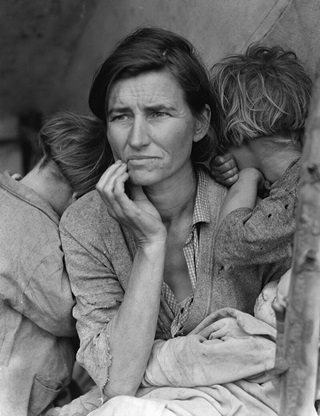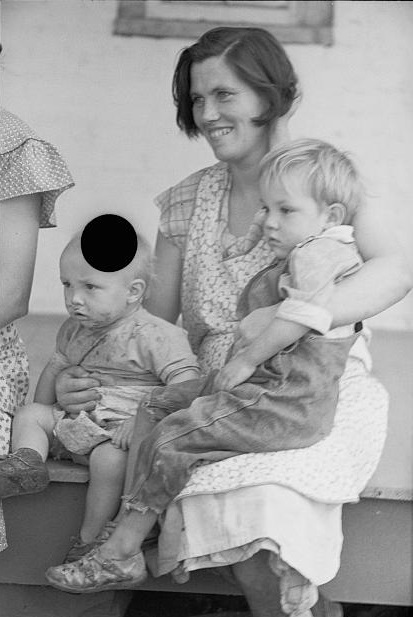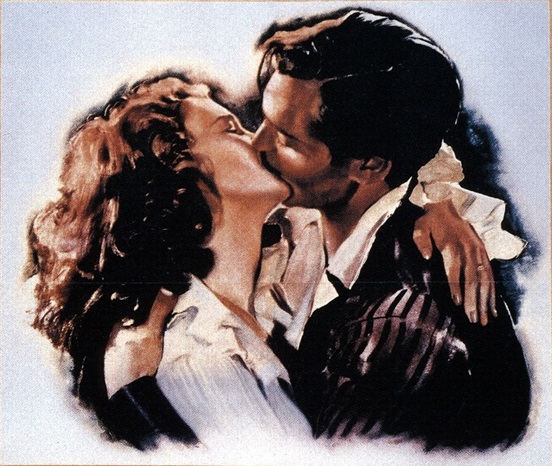|
       
Life in the Great Depression
... the most serious economic depression the world had ever seen
...
Ben Walsh, GCSE Modern World History (2004)
|
|
|
|
|
The Great Depression – IN STATISTICS
By 1933:
Exports had fallen from $10billion to $3bn
Industrial production had fallen by 40%
Prices had fallen 50%
Wages had fallen by 60%
Share prices had fallen by 80%
More than 7,000 banks had gone bankrupt.
-
There were 11.5 million unemployed in 1932 – a quarter
of the workforce = 30 million Americans without a source of income.
-
Minorities were especially hit – in Philadelphia 39% of
people on relief were black/ in Atlanta 70% of black workers unemployed.
-
Single-industry areas were especially hit – in one
steel town, 80% of workers were unemployed.
-
The Construction industry declined by 75% 1929-32.
-
At the peak of the depression, 17,000 families evicted each week for not being able to pay their rent/ 1,000 mortgages foreclosed a day.
In 1932 alone a quarter of a million Americans had their homes repossessed.
-
A quarter of all farms were foreclosed, 1920-39.
-
There were 2 million Americans ‘on the road’, a quarter of them under the age of 21.
-
During the
dustbowl, it was reported that 150,000 families were on the brink of starvation in Arkansas alone
-
In 1931, 20 people starved to death; in 1934 that
number had risen to 110. Thousands of people, however, died of
complications related to malnutrition.
In 1932, 23,000 people committed suicide.
|
Going Deeper
The following links will help you widen your knowledge:
Basic accounts from
BBC Bitesize

FSA
photos

Studs
Terkel interviews
Memories of the Depression era
 Essay: In what ways were the lives of women in America impacted by the 1930s Depression? Essay: In what ways were the lives of women in America impacted by the 1930s Depression?
 Essay: In what ways were the lives of African Americans impacted by the 1930s Depression? Essay: In what ways were the lives of African Americans impacted by the 1930s Depression?
 Giles Hill's podcast on the Great Depression Giles Hill's podcast on the Great Depression
YouTube
Great Depression - simple overview
Stories from the Depression - excellent
AQA-suggested Interpretation of the Great Depression:
Studs Terkel, Hard Times
|
Those who suffered [AWFUL,
MUM]
It is really important here, amidst the fascinating facts, to
appreciate the massive scale and emotional cost of the personal and societal
suffering of the event Studs Terkel christened a 'holocaust'; the Great
Depression was one of the greatest tragedies of the 20th century.
-
African Americans
lost their unskilled work to white unemployed because there were no longer any jobs that white workers refused to do (96% of black workers in the South were unskilled)
lay-offs were discriminatory – African Americans were ‘last hired, first fired’ (being white doubled your chances of finding work)
on average African Americans earned about three quarters of a white worker
low wages meant that even African Americans families with someone working were in poverty
African Americans found it hard to get housing; landlords took advantage to charge higher rents
banks and businesses in African-American and
Immigrant areas disproportionally failed (of 134 black banks, only 12
survived in 1936).
-
Women
were “the first orphans in the storm”
Women who went to work to ‘save the family’ worked
longer hours (up to 50 hours a week) for lower wages.
Unattached women – and particularly those from
minority groups – were a disgraced part of society; a study of unattached
women in Chicago found most were over 40, 15% had a mental illness.
Those who went on the road faced more dangers than men.
-
Farmers
In the mid-west, the situation was worsened by over-farming,
which caused a 'dust bowl' which led to the bankruptcy of thousands of farms; as a result the
Depression was particularly fierce in agriculture. -
‘Okies’ and ‘Arkies’ fleeing the dust bowl migrated to California
... where they met the ‘bum
blockade’ (LA police at California border turning them back); if they got
there, they found they were competing for work with Mexican Chinese,
Japanese and Filipino immigrants = starvation wages.
-
Tenant farmers and
sharecroppers of the South
“suffered more than other classes of people” (esp. in Arkansas and
the Mississippi Delta) – 100,000 sharecroppers were forced off the land
altogether
-
Unemployed
Crowds of people seeking work at the docks and outside
the factory gates.
People from rural areas and the South flocked into the towns
Municipal charities were overwhelmed – councils went bankrupt
Breadlines/ soup centres
Life was particularly harrowing for mothers with children
-
Lost everything
More than a million people had lost everything the Wall Street Crash, and were left with nothing but debts
Many more had lost everything in the bank failures
-
Many of these people had no other income, were too old
to work, and there was no welfare state
-
Mine workers
The mining industry had been in trouble before the Depression – miners lived in company-built towns called ‘patches’, in company-constructed ‘shotgun homes’ build from wood used in packing explosives, and had to buy from company-owned ‘pluck-me’ stores
at inflated prices. They faced ‘yellow dog’ company police and were paid
in ‘scrip’ (credit notes, exchangeable at the company store).
-
Union Activists were hounded by the police:
When African-American Angelo Herndon organised a
cross-race unemployment protest in Atlanta in 1932, he was arrested under an old
slave law for “attempting to incite insurrection” and sentenced to 18 years on a
chain gang.
When African-American Communist Ned Cobb led a sharecropper group trying to prevent the local sheriff seizing a man’s property there was an armed gunfight leaving three black men dead, and Cobb served 13 years in prison.
-
Many others faced hardship and despair:
People who did not lose their jobs were forced to
accept a pay cut (in average, by a third) or reduced hours.
People, generally the middle class, too proud to ask for relief, suffered perhaps worst of all. Many families fell apart – fathers, who had been the breadwinner, lost status and often ‘went to seed’; mothers were expected to go out to work AND come home and care for the children, cleanng etc.; children
had to grow up quickly and take jobs.
|
Source A

This photo is arguably the defining photograph of the
Depression. It was taken by Dorothea Lange, who had been employed by
the Farm Security Administration to document the experience of Americans in the Depression. It shows Florence Thompson,
aged 32, mother of seven, a migrant pea-picker in California
and refugee of the dust bowl.
The FSA vetted Lange's photos – i.e. this photo is government propaganda.
What was your first thought on
seeing this image?
Source B

Photos the FSA rejected were punched through with a hole,
to make them unreproducable. This 'hole punch photo' shows Mrs
Hallett, wife of a resettled farmer in Tompkins County, New York state.
Source C
I will tell you a family story for what little it is worth, my mother told me once, “we were poor, we were poor before the depression we were poor after it hit, its the rich that suffered they had all that loot and then they had nothing, we didn’t suffer at all we were used to being poor” thats what she said, i don’t know if its true , i doubt it people did suffer, but poor folks are tough , and it was easy for them to adapt to less they made do with what they had, too lose everything a pampered life style.. well it was too much for many , they just jumped out of building to the their deaths
Quote on the internet (2020).
|
Agency: how did people cope? [MAMS
R FAB]
It is vital that you do not portray people caught up in the Great
Depression as passive victims only. It is important to give them 'agency'; most people tackled the Depression heroically, and what they DID is at least as important an aspect of their experience of the depression as what they suffered.
-
Mutual Support
Some towns set up bread and soup kitchens and groups
like the Salvation Army (and even Al Capone) organised charity hand-outs.
-
There were many protest marches and riots. When banks tried to re-possess some farms, local farmers banded together and drove them off with pitch-forks.
-
African Americans in Harlem in New York shared accommodation,
clothes and even 'hot-bedding',
and held rent-parties to raise this week's rent. Harlem had more than
2,000 social, political and mutual aid societies.
-
In some places unattached women formed mutual support groups and shared resources.
-
Homeless people built shanty towns called ‘Hoovervilles’ (as an insult to President Hoover). The Hooverville in Seattle had a mayor and a council and basic sanitation
rules. The Hooverville in Oklahoma was next to a stockyard (which allowed residents to steal milk).
-
Some farmers arriving in California rented plots (at $5
down and $3 a month) from developers unable to complete their plans and built
‘Okievilles’.
-
Activism
The Daily Worker reported 702
marches, protests and rent actions across the entire country, 103 in New York alone.
-
In 1930, 10,000 went on a Communist-organised marched in Washington DC (the march was broken up by police with tear gas and clubs.
-
In 1932, a crowd of 60,000 assembled to greet a Hunger March on Washington DC (the march was prevented from entering the capital by police with machine guns).
-
Although unions struggled during the peak of the depression 1929-33:
-
The Highlander Folk School was founded in 1932 to train union and civil rights organisers/activists.
-
By 1933, the Sharecroppers Union had 5,500 members, and organise strikes by cotton pickers and farm workers.
-
The 'Harlan County War' began in 1931 when the Mining
Company cut scrip from 80c in the dollar to 40c; violence continued until
1935. The night after company thugs had ransacked her house seeking
her Union leader husband, Florence Reece wrote the famous protest song:
Which Side Are You On?
-
The Communist Party grew rapidly: speakers like the African-American Hosea Hudson blamed the capitalist system (provoking violent confrontations with the police in every city he visited).
-
(Also see the sections on Farmers, African Americans and the
Bonus Army below).
-
Moving Out
200,000 midwest farmers ‘Okies’ (from Oklahoma) and ‘Arkies’ (from Arkansas) abandoned their farms
and took to Route 66 to go fruit-picking in California (the famous novel The Grapes of Wrath
is about this).
Itinerant workers – 'hoboes', 'tramps', 'bums'
and 'yeags', – travelled round, riding the railroad. -
The famous protest singer Woodie Guthrie left his wife
and family to take migrant work in California, eventually making a living as a performer; his song
Hard Travelling
describes his experiences.
-
Scrimping
Wives and children worked where they could. -
They took the most dangerous and unpleasant jobs.
-
Apple-sellers and other street vendors/ street entertainers.
-
Taking in lodgers.
-
Scouring the rubbish heaps for food, slag heaps for coal.
-
Begging (cf the song ‘Brother, can you spare a dime’).
-
Rooftop gardens/ pigeon crees (for food).
-
Recipes of the Great Depression such as ‘edible weed stew’ and (eggless, butterless) ‘depression cake’.
-
Never throwing things out.
Hung onto their cars – last thing to go!
-
Relaxing (vitally important for mental health):
Radio. -
Books: such as Gone with the Wind and
How to Win Friends and Influence People … and comic strips and pulp fiction.
-
Movies: only 30c for ticket.
-
Church, social clubs, pool halls, dances, baseball games.
-
‘Fads’ such as pole-sitting, marathon dancing.
-
Harlem had a very lively social and cultural scene (and rent parties).
-
Farmers
-
African Americans
African-Americans leaders such as Philip Randolph
(Brotherhood of Sleeping Car Porters and Maids, 1925) and Frank Crosswaith
(Negro Labor Committee, 1935) organised black workers to campaign for better
wages and conditions.
Harlem became the national centre of the movement for racial equality. They ran a 'Don't Buy Where You Can't Work' campaign and switched to voting Democrat. By 1935, the Communist Party in Harlem had 1,200 members.
In 1935 a riot resulted in injury to 57 civilians and 7 policemen.
-
Bonus Army
|
Source D
Last summer, in the hot weather, when the smell was sickening and the flies were thick, there were 100 people a day coming to the dumps. A widow, who used to do housework and laundry, but now had no work at all, fed herself and her 14-year-old son on garbage.
Before she picked up the meat she would always take off her glasses so that she couldn't see the maggots.
from New Republic magazine (1933).
Did You Know

Before he became famous heartthrob Rhett Butler of
Gone with the Wind, the actor Clark Gable, aged 22, out of
work and stranded in Montana, had to ride the rails back home.
His story was essential in the Depression because it kept alive the
'American Dream' – that America is a land where ANYONE (even a hobo) can 'make good'.
Source E
There is not an unemployed man in the country that hasn't contributed to the wealth of every millionaire in America. The working classes didn't bring this on, it was the big boys...
We've got more wheat, more food, more cotton, more money in the banks, more everything in the world than any other nation that ever lived ever had, yet we are starving to death. We are the first nation in the history of the world to go to the poorhouse in an automobile.
Will Rodgers' radio broadcast 'Bacon, Beans and Limousines' (1931), in which he criticized U.S. leaders for not adequately addressing the country’s unemployed population.
Source F
The Depression era proved bleak for black workers and their families as they struggled against the dual burdens of racism and economic devastation.
Still largely restricted to the worst jobs offering the least pay and
mobility, hired last and fired first, African Americans endured dramatic
increases in poverty and unemployment and suffered greatly from the ills
they produced.
The desperation itself, though, did fuel economic and labor protests. While only minimally successful at the time, they provided a repertoire of tactics and rhetoric that would prove crucial to civil rights struggles to come.
Cheryl Lynn Greenberg, African Americans in the Great Depression (2009).
Source G
As the Depression lasted, it put the middle class more and more into the circumstances of the poor and encouraged empathy across class lines.
Eric Rauchway, The Great Depression and New Deal (2008).
Source H

A Penny Auction at a foreclosed farm in Michigan, 1936. The nooses are a warning to anybody who might try to buy.
|
Those who prospered [SELF-MADE]
Not everyone in America suffered in the Great Depression; for
some, life was good, many others survived relatively unscathed.
-
Successful investors
-
Efficient companies
which were able to cut costs (e.g. Decca reduced the cost of a record from 75c to 35c) could make a profit even at low prices. Chain stores like Woolworths, J.C.
Penney, and Sears benefited from their ability to offer low prices due to
economies of scale.
-
Large Corporations
-
Finance
The Bank of Italy (later Bank of America) grew by offering small loans and helping the average consumer. Insurance Companies like Metropolitan Life Insurance Company (MetLife) grew as people tried to insure themselves against future hardships.
Pawnshops thrived, as did the non-profit Provident Loan Co., which offered loans
for assets.
-
Modern sectors
of the economy thrived. The ‘new industries’ (electrical goods, chemicals) continued to grow rapidly.
The Empire State Building was finished in 1931, and the San Francisco Golden
Gate Bridge was started in 1932.
-
Advertising
-
Domstic essentials
Firms like Procter & Gamble (household products) and
utility companies like Consolidated Edison in New York thrived because these
produced essential
Giffen goods', which people
HAD to buy, so they diverted money other expenditure to do so.
-
Entertainment Industry
|
Consider:
1. Study Source A. What was its propaganda message
(clue: it was your immediate response to it when you saw it).
2. Look at Source B. Suggest reasons why the
FSA rejected that photo.
3. Do you believe Source C?
4. Can you see any evidence on this webpage to
support Rauchway's claim in Source G that the Depression increased
general public support for the poor? Can you see any evidence
which appears to contradict it?
5. Explain why the Great Depression saw an increase
in support for Communism.
6. A "holocaust". Why, do you think, when
maybe up to three-quarters of
the population "survived relatively unscathed", has the Great
Depression left such a traumatic impression on the folk-memory of the
period?
7. Write an essay: "What was life in the USA like during the Depression?" Focus on people's
experience of the Depression rather than on just the facts.
- AQA Exam-style
Questions
4. Describe two problems faced by people in America during the Depression.
5. In what ways were the lives of American people affected by the Depression?
- OCR-style Questions
5. Describe one group which did not suffer during the Great
Depression.
6. Explain how the Great Depression affected Americans in the 1930s.
8. ‘A holocaust’. How far do you agree with Studs
Terkel's view of the Great Depression?
|
    
|



